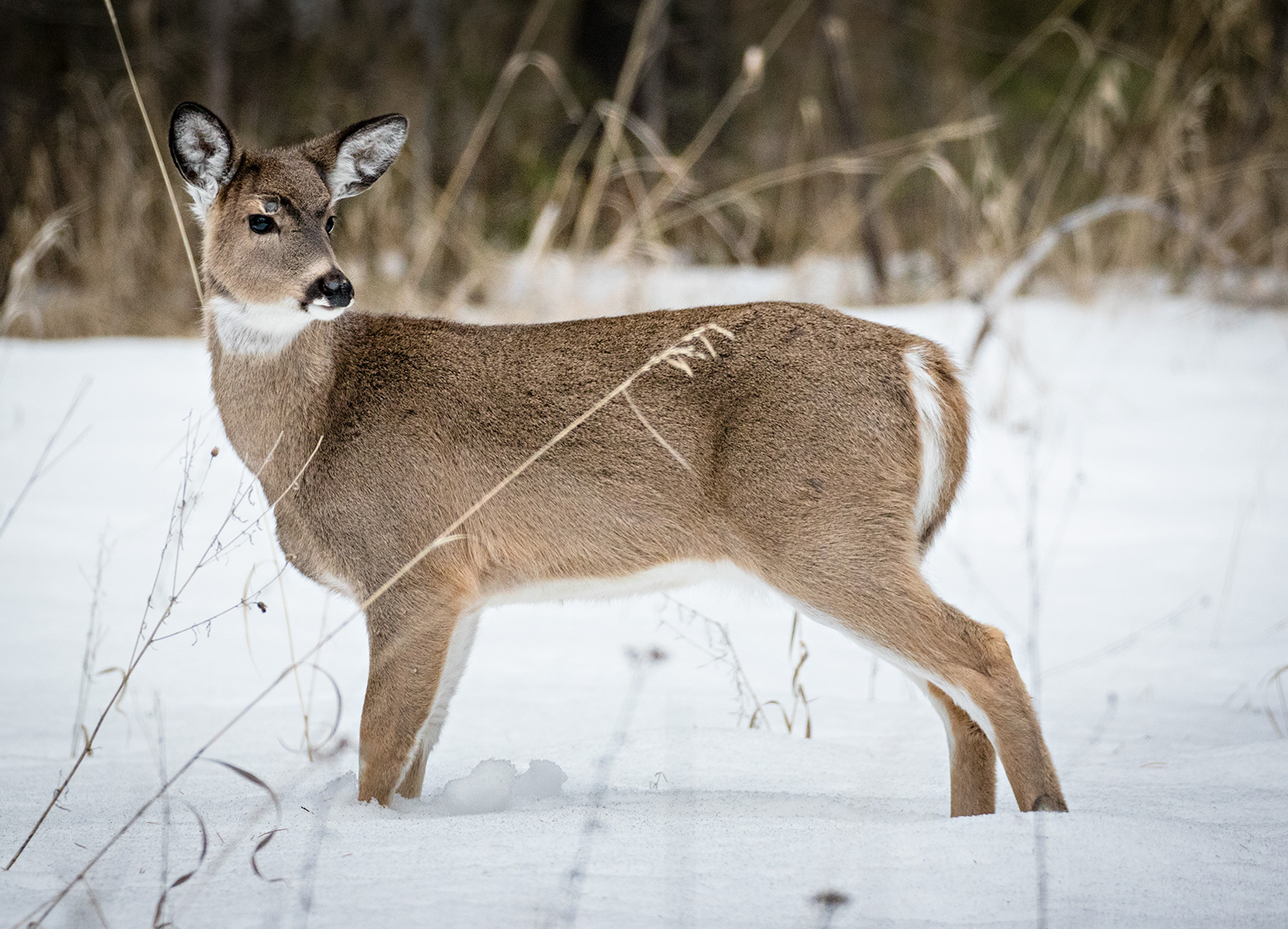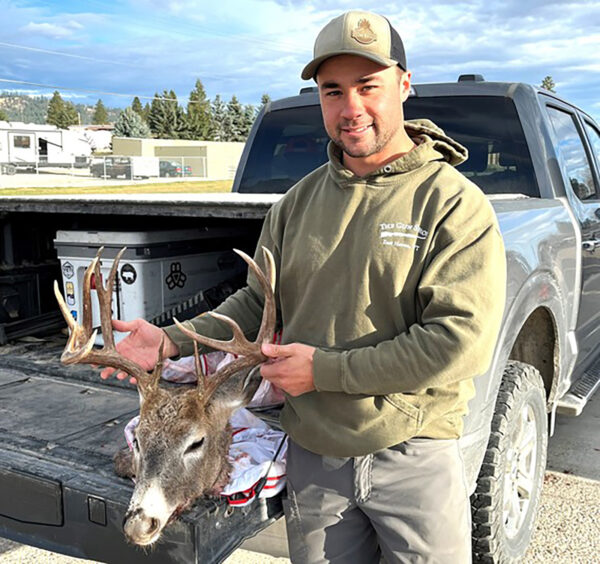In Northwest Montana, Hunting Check Station Results Show Improvement Over Last Year
General hunting season kicked off Oct. 26 with nearly 2,000 hunters stopping at regional game check stations on Saturday and Sunday; overall, 10% of hunters reported game, a 3% increase over last year’s opening weekend
By Tristan Scott
Following last year’s slow start to general deer and elk hunting season, big game check station results indicate hunters had better success this opening weekend, when nearly 2,000 hunters stopped at Montana Fish, Wildlife and Parks’ (FWP) regional check stations, 10% of them with game.
That’s a 3% increase over last year’s opening weekend totals, according to FWP, which tallied 163 white-tailed deer over the weekend, including 67 bucks. That’s compared to 103 white-tailed deer during last year’s opener, when hunters harvested 44 bucks. Hunters also checked 21 mule deer, compared to five last year, as well as 16 elk, compared to 10 in 2023.
The 2024 general deer and elk season runs Oct. 26 through Dec. 1.

Check stations are open on weekends during general season from 10 a.m. until about an hour and a half past sunset. The northwest Montana stations are located at U.S. Highway 2 west of Kalispell, Montana Highway 83 north of Swan Lake, Highway 200 west of Thompson Falls, and Highway 93 near Olney.
Hunters must stop at any check station they encounter whether they harvested an animal or not. The counts at the stations represent a sampling of the harvest and do not represent the complete number of animals taken.

Chronic Wasting Disease
Last week chronic wasting disease (CWD) was detected in a white-tailed deer in Kalispell. This is the first time CWD has been detected in a wild herd in Hunting District 170 (HD 170).
FWP is increasing the availability of antlerless white-tailed deer hunting licenses in HD 170 following the detection. Hunters can now buy two 170-00 Deer B licenses over the counter. Previously, hunters were only allowed to buy one.
The 170-00 Deer B License allows hunters in Hunting District 170 to harvest a white-tailed deer without antlers or with antlers less than 4 inches long as measured from the top of the skull.
Following Montana’s CWD Management Plan, FWP is increasing harvest opportunity in the district to assess the prevalence of CWD in the area. The CWD management plan is a strategy based on the best available science and developed by FWP to monitor, control, and prevent the spread of CWD among wild deer, elk, and moose populations.
CWD Testing
CWD sample submission is voluntary in most places in Montana, although wildlife managers are encouraging all hunters in HD 170 to get their harvested deer and elk tested for CWD.
There are new mandatory testing requirements for tags associated with CWD management near Libby. Testing is required for all animals harvested using the Deer B License 199-20 in HDs 100, 103 and 104, or Deer Permit 103-50 in HD 103.
“FWP strongly recommends that hunters receive a negative CWD test result before bringing their deer, elk or moose to a meat processor or donating it to a food bank,” according to a press release from FWP.
If the animal tests positive for CWD, FWP will advise the hunter on proper carcass and meat disposal and give instructions on how to request a replacement license.
How to Submit Samples for Testing
All hunters who want their harvested animal sampled can submit samples themselves by following steps on the Montana CWD Submission Guide or by visiting a CWD Sampling Station.
In northwest Montana, hunters can bring their harvested animal to the FWP office in Kalispell, Monday through Friday from 8 a.m. to 5 p.m. for sample collection. Reservations are not required and sampling will be done on a first-come, first-served basis.
A CWD sampling station in Libby will operate Saturdays, Sundays, and Mondays, 10 a.m. to about an hour and a half past sunset, and Tuesdays from 1 p.m. to sunset at the Montana Department of Transportation shop on U.S. Highway 2 south of town.
Hunters who want their animal sampled should leave 2 to 4 inches of the neck below the low jawbone and base of the skull to ensure lymph nodes are present and not inadvertently left with the carcass. Samples cannot be collected from frozen heads.